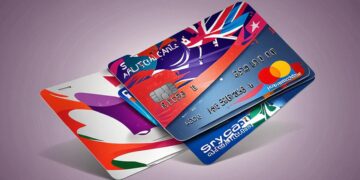Tips for Managing Credit Card Debt and Maintaining Financial Health

Understanding Credit Card Debt
Managing credit card debt is crucial for maintaining your financial health. In Australia, the increasing reliance on credit cards has led many individuals to experience significant financial strain. The convenience of credit can quickly turn into a burden if not handled wisely. By gaining insight into how to manage credit card debt effectively, you can improve your financial wellbeing and regain control over your finances.
Key Strategies for Managing Credit Card Debt
When tackling credit card debt, a few fundamental strategies can serve as your guiding principles. Here are some important aspects to consider:
- Know Your Balances: Regularly check the total amount you owe on each card. This means not only looking at the current balance but also being aware of how much you are spending relative to your credit limit. For example, if you have a credit limit of $10,000 and your balance is $9,000, you are at a 90% utilization rate, which can adversely affect your credit score.
- Understand Interest Rates: Familiarize yourself with the interest rates of your cards to identify which debts need to be tackled first. For instance, if one credit card charges an interest rate of 20% while another has a 15% rate, prioritize paying off the one with the higher rate to minimize your overall interest payments.
- Set a Budget: Create a realistic budget to manage your expenses and debt repayments. Assess your monthly income and expenses, and allocate funds accordingly. For example, after listing your fixed expenses like rent and utilities, determine how much can be directed toward paying off your credit card debt each month.
Practical Tactics for Reducing Debt
Implementing practical strategies can help reduce your debt and avoid common financial pitfalls. One effective approach is the debt avalanche method, where you focus on paying more toward the credit card with the highest interest rate first while maintaining minimum payments on the others. This method can save you money on interest in the long run and accelerate your journey to becoming debt-free.
Furthermore, consider utilizing balance transfer offers wisely. Many credit cards in Australia offer promotional interest rates for new customers, potentially allowing you to move your high-interest balance onto a lower-rate card for a limited time, thus reducing your overall interest burden. However, always read the fine print and understand any fees associated with this process.
Holistic Financial Health
It’s essential to recognize that financial health is not solely about managing debt. Regular saving and investing can significantly enhance your financial position over time. After stabilizing your debt, try to establish an emergency fund with at least three to six months’ worth of expenses saved. This safety net can prevent future debt accumulation due to unforeseen circumstances.
Taking proactive steps today can lead to a more secure tomorrow. By becoming mindful of your spending habits and focusing on gradual improvement, you can cultivate a more robust financial future. Your journey toward financial freedom starts with awareness and the commitment to implement these essential strategies.
Establishing a Solid Foundation
Before diving into specific tips on managing credit card debt, it’s important to build a solid foundation for your financial health. An effective strategy starts with a clear understanding of your current situation. This means assessing your income, expenses, and overall financial picture. A well-structured approach allows you to identify patterns and areas that require immediate attention.
Assess Your Financial Situation
The first step in your journey to managing credit card debt is to conduct a thorough analysis of your finances. Begin by gathering all your financial statements, including your credit card bills, bank statements, and any other outstanding debts. This comprehensive view will help you to develop a detailed budget and create a strategy to tackle your credit card bills actively.
To facilitate this assessment, consider the following steps:
- Track Your Expenses: Keep a record of all your daily expenses for at least a month. This will provide insight into where your money is going and highlight areas where cuts can be made. You may find that subscriptions or impulsive purchases are adding unnecessary strain on your finances.
- Calculate Your Total Debt: Make a list of all your credit card balances and the corresponding interest rates. Knowing this information will allow you to prioritize which debts to tackle first.
- Evaluate Your Income: Take a close look at your total monthly income. Include all sources of income, such as salary, side gigs, and any other money you may receive. This will help you figure out how much cash flow you have available for debt repayment and essential living expenses.
Prioritize Debt Repayment
After assessing your financial situation, it’s vital to create a repayment plan. If you have multiple credit cards with balances, prioritize them based on their interest rates, as mentioned earlier. This method not only keeps you focused but also helps to minimize the interest paid over time. Another tactic to consider is the debt snowball method, where you pay off the smallest balances first to gain momentum and motivation. Whichever method you choose, commitment and consistency are crucial.
In addition to prioritising debt, consider setting up automatic payments for your credit cards. This will help you avoid missed payments and late fees while reducing your overall debt more efficiently. Setting reminders for payment due dates can also ensure that you are always on top of your financial commitments.
Finally, remember to review and adjust your budget as necessary. Life circumstances can change, and being flexible allows you to respond to new challenges while keeping your debt under control. By establishing a strong financial foundation and being proactive about your spending and repayment strategies, you can significantly enhance your ability to manage credit card debt effectively.
Implementing Effective Strategies
Once you have assessed your financial situation and prioritized your debt repayment, the next step is to implement effective strategies for managing credit card debt. This involves not only reducing your current balances but also consciously developing habits that promote long-term financial health.
Use a Budgeting System
Establishing a budgeting system is fundamental to keeping your finances in check. A popular method in Australia is the 50/30/20 rule, which allocates 50% of your income to necessities (like housing and groceries), 30% to discretionary spending (such as entertainment and dining out), and 20% to savings and debt repayment. This framework can help you stay organized and focused on what matters most financially.
To create a workable budget:
- Choose a Budgeting Tool: Whether you opt for a spreadsheet, a mobile app like MoneyBrilliant, or good old-fashioned pen and paper, selecting a method you’re comfortable with will make it easier to stick to your budget.
- Review and Adjust Regularly: Set aside time each month to evaluate your budget. Are there areas where you can cut back? Are you on track to meet your savings goals? Frequent adjustments will keep you aligned with your financial objectives.
Minimize New Debt
During the course of paying down your credit card debt, it’s imperative to minimize incurring new debt. A common pitfall is using credit cards for everyday purchases while trying to pay down existing balances. To combat this, consider alternatives such as using cash or a debit card for daily expenses. This will help you manage your spending more effectively and keep track of your available funds.
Additionally, consider the benefits of a balance transfer. Some credit card companies offer attractive introductory rates for consumers willing to transfer their existing high-interest balances. If you choose this path, be mindful of any transfer fees and ensure you have a plan to pay off the balance before the promotional rate expires.
Explore Financial Education Resources
Knowledge is a powerful tool in managing credit card debt. Take advantage of financial education resources available in Australia, such as community workshops or online courses. Websites like MoneySmart offer valuable insights and tips on budgeting, understanding interest rates, and building sustainable financial habits.
Additionally, various non-profit organizations provide free financial counseling services. They can help you create a realistic spending plan and explore options that suit your individual circumstances without judgment. Seeking professional advice can provide clarity and strength as you begin to take control of your finances.
Maintain a Positive Credit Habits
Finally, part of maintaining financial health includes cultivating good credit habits. Regularly check your credit report for inaccuracies and understand how credit scores work. Paying your bills on time, keeping your credit utilization rate low (ideally below 30%), and avoiding multiple hard inquiries on your credit report will set you on the right path toward improving your credit score.
By implementing these strategies, you can establish a balanced financial landscape that not only supports debt repayment but also fosters long-term financial stability. Remember, creating a sustainable system takes time and patience, but the rewards of financial health are well worth the effort.
Conclusion
In summary, managing credit card debt and maintaining financial health is a journey that requires commitment and strategic planning. By assessing your financial situation and implementing effective strategies—such as establishing a budget, minimizing new debt, seeking financial education, and cultivating positive credit habits—you can set yourself up for success. These foundational steps are crucial for navigating Australia’s financial landscape, where living expenses can be high and unexpected costs can arise without warning.
For instance, creating a budget based on the 50/30/20 rule can be a practical way to manage your money. This rule suggests allocating 50% of your income to essential needs, 30% to personal expenses, and 20% to savings and debt repayment. By breaking down your finances in this way, you can clearly see where your money is going and identify areas for improvement. Regularly reviewing your budget allows you to adjust your spending and ensure you’re prioritizing debt repayment.
Additionally, seeking out local resources, like financial workshops or non-profit counseling services, can be invaluable. These programs often provide personalized advice tailored to Australian financial circumstances, helping you understand everything from interest rates to effective savings strategies. The financial literacy gained from these resources not only empowers you to manage current debts but also prepares you for future financial decisions.
While managing debt may seem daunting at times, adopting these practical habits will help reduce stress and promote stability in your financial life. Establish goals, no matter how small they may seem. For example, aim to pay off a specific amount of your debt each month, or save a set percentage of your income. Celebrate these milestones to stay motivated and visually track your progress, reinforcing the knowledge that each step taken is one step closer to financial independence.
Take control of your financial future today: every little step counts, and the greater reward of independence and security awaits you. As you move forward, keep reminding yourself that the effort you put in now will reap benefits for years to come. Building a solid financial foundation today is an investment in your tomorrow, ultimately leading to a more secure and stress-free life.

James Carter is a financial writer and advisor with expertise in economics, personal finance, and investment strategies. With years of experience helping individuals and businesses make complex financial decisions, James offers practical insight and analysis. His goal is to give readers the knowledge they need to achieve financial success.






